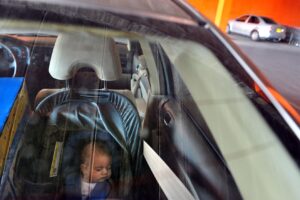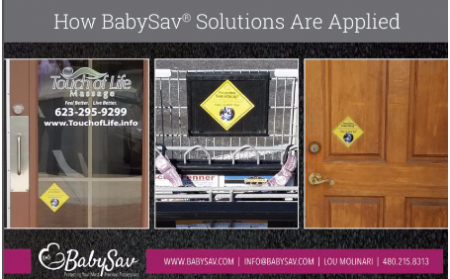Don’t Forget and Regret
Don’t Forget and Regret

This is one of the many messages we hear almost daily, especially in the HOT summer months related to the dangers of the heat and being left in an un-attended vehicle. Others are: Remember you Children and Pets in the Cars, Hot Cars Kill, and Look before you Lock, are part of many campaigns around the country to alert all caregivers to the potential dangers.
Though the media and other agencies are diligent in getting these messages out, we still have 37 children die a year due to hot car tragedies1. So far in 2017 we have lost 26 children. It is true that there may be many reasons for these deaths to occur, but on the average 54% of them are due to a distracted caregiver2. So why are these messages not working? There are a few reasons, (but 1st … it must be said that these continuous messages are needed, as they do help in supporting the circle of awareness to this problem), yet the challenges are:
- These messages may not be getting to everyone…
- These messages are bringing the attention needed, but maybe at the wrong time…

As to the distracted caregivers there may be real reasons for these situations to occur. But let’s look at a simple example to try to explain: image your office, desk, or refrigerator at home, etc. On them you may find One or Dozens of colored sticky papers on them. For what reason: to help remind you to do something. Though you know that task is important, you still put a sticky note to help remind you. The same is true in many other cases; companies have safety signs up, though all the employees have been trained, and so on…
So going back to the messages and campaigns that are in place today as described earlier, one of the possible reasons for the continual occurrences of this problem is that these messages are occurring at the wrong time, and maybe not reaching all that they should be.
Additionally, the truth is parents and other caregivers really do just honestly forget sometimes that their child or pet is still in the car when they leave it. A Pulitzer Prize winning article by Gene Weingarten of The Washington Post in 2009 described how it can happen, and a majority of the time, it’s not a malicious act.
David Diamond, a professor of molecular physiology at the University of South Florida, explained to The Washington Post: Memory is a machine, and it is not flawless. Our conscious mind prioritizes things by importance, but on a cellular level, our memory does not. If you’re capable of forgetting your cellphone, you are potentially capable of forgetting your child.
Basically, when you have a daily routine, sometimes your brain goes on autopilot while you perform regular, familiar acts. Routines might change, and your memory gets confused. Suddenly, you might think you’ve done something like drop your toddler off at day care — because you do it every day, at the same time, as part of the same routine — when really, you didn’t.
So what can be done?
- We need the daily reminder and campaigns that exist today, as they do have some impact.
- We need legislation to drive technology solution into future cars and car seats
- We need continued development of solutions and APPs to be placed into existing cars and car seats
- We need to entice caregivers to install such devices and APPs and maintain them, until there is a full proof solution
Yet for each of the above there are struggles/challenges:
- We need to ensure we reach everyone
- New solutions into cars and car seats will take many years to be implemented across all caregivers
- Less than 5% of caregivers will purchase any existing device or maintain it properly, as they feel “it will never happen to me”.
So is there really a solution?
Not one solution will guarantee to fully stop this problem, so we need continue to attack this problem from all of the above directions as each brings values of their own, yet one solution and approach may have an unprecedented reach more than all others today.
A nonprofit, BabySav, has such a solution and approach. The beauty of BabySav stickers is that they can be put anywhere that might be part of your routine when you’re out and about, and remind you, without judgment, to make absolutely sure that you didn’t leave anyone behind in your car.
BabySav is bringing awareness to ALL caregivers when they need it most, AT THE TIME THAT THE DISTRCATION is most impactful to the child or pet.

BabySav also has other solutions available with a similar impact potential.
- Kids and Cars, https://www.kidsandcars.org/how-kids-get-hurt/heat-stroke/
- Jan Null, CCM, Department of Meteorology and Climate Science, San Jose State University, https://noheatstroke.org”
- Josie Rhodes Cook, writer for Romper.com, https://www.romper.com/p/babysav


